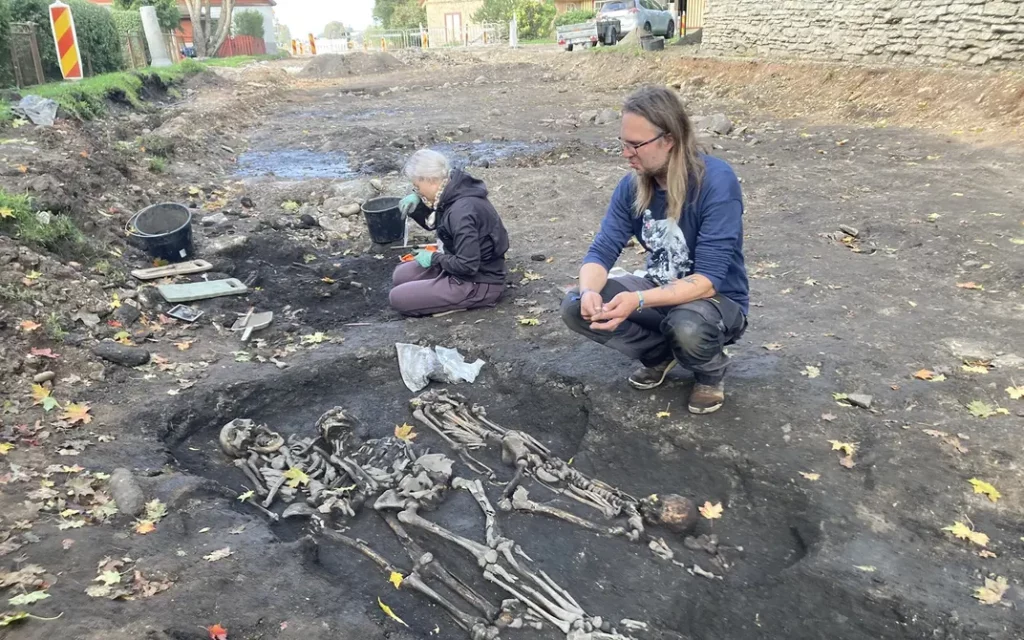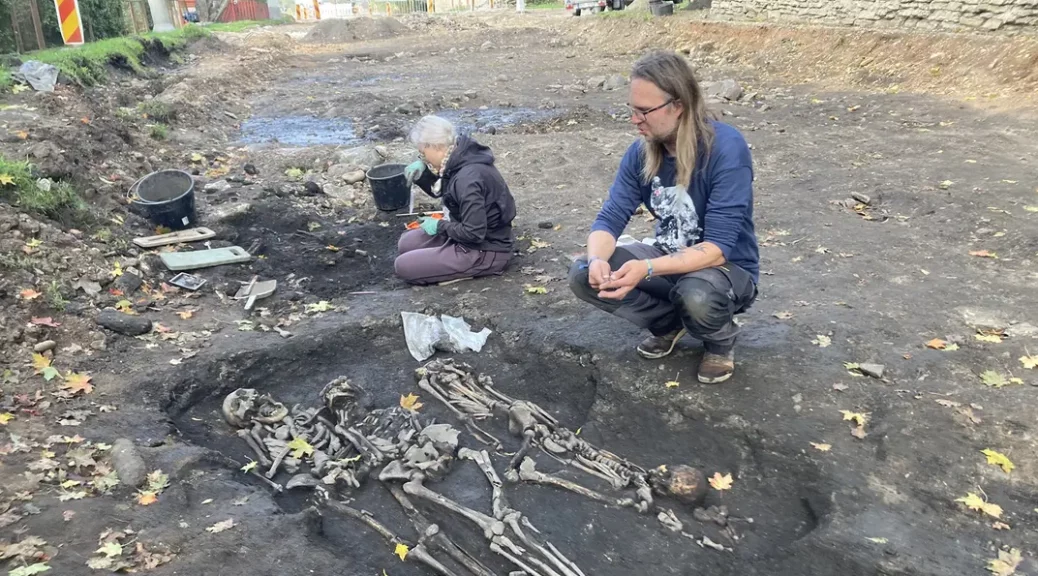Archeologists discover human bones and Viking-era settlements in Viru-Nigula
During an archeological dig ahead of planned roadworks in Viru-Nigula, Lääne-Viru County, human bones were discovered in the vicinity of the church wall. The archaeological work confirms researchers’ earlier hypothesis that the cemetery and church were built in the medieval period on the site of an earlier settlement.
During the archaeological excavations, a total of 11 human skeletons have been discovered. Four of those found had most likely been buried in a common grave. Preliminary estimates place the burial date of the finds somewhere between the 16th and 18th centuries.
The findings from Viru-Nigula will provide bone researchers with valuable information regarding methods used to treat illnesses and injuries at that time.
“There are a number of interesting pathologies, bone fractures, and injuries that are interesting to observe in my line of work. One [skeleton] has a fracture of the femur, for example. It will be interesting to see how that person deals with it.
Clearly, someone had to care for and treat them. There’s a perception about these types of severe fractures that people at that time didn’t survive them, but in fact, they did manage to cope with them. Of course, they weren’t put in the hospital and fixed up like they are nowadays, but they have healed nicely,” said bioarcheologist and bone specialist Martin Malve.
In addition to the medieval cemetery, the location of a settlement with a history dating back to the Viking Age was also discovered at the site.
“There are a lot of pottery shards and nails, and there are also plenty of animal bones – fish bones, bird bones, for example, so the material is very rich, in addition to the human bones. We can learn what people ate and which utensils they used.
We are also taking soil samples from here, where we are trying to get plant residue, which should provide us with information about their agricultural practices,” Malve said.

The finds from different eras will inevitably lead to imaginations running wild, with plenty of speculation about what kinds of events may have taken place in Viru-Nigula at the end of antiquity, 800 years ago, and during the Crusades.
“People’s romanticism has led to suggestions that the village was burnt down, or that the Germans came and destroyed the village. But what actually happened, we don’t know.
Perhaps part of the village was deserted or demolished or a church was built in the center. If you look at the maps of the settlement and the cultural layer of the area, there is evidence that the church and the cemetery were built right in the middle of the village,” Malve said.
The two-week archaeological dig in Viru-Nigula is scheduled to end on Sunday.
